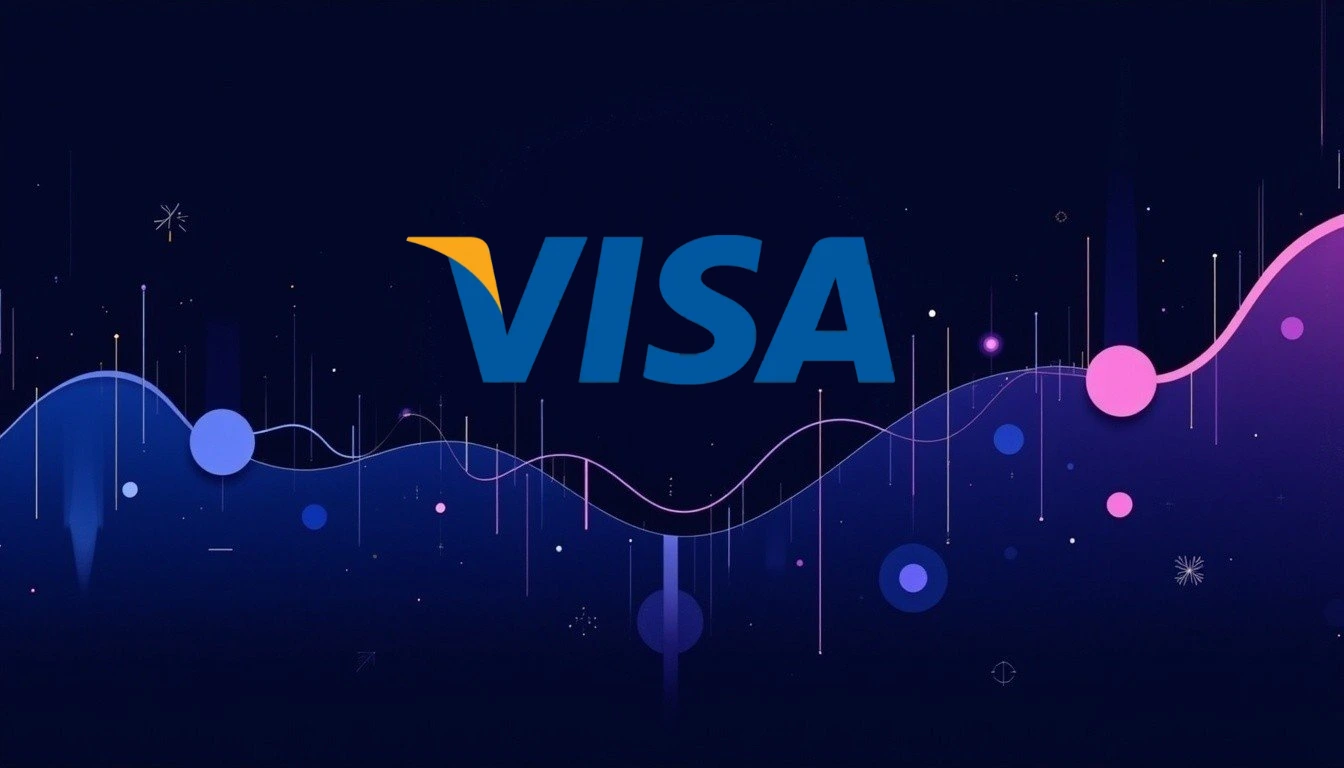- Visa’s Fiscal Q2 2025 Results coming tomorrow, and it’s important for crypto
- Visa’s financial health is a critical indicator of global payment dynamics
- Visa remains one of the key payment gateways supporting crypto market liquidity
- They play a crucial role in integrating blockchain solutions into traditional payment systems
Visa’s Fiscal Q2 2025 Results coming tomorrow, and it’s important not only for the TradFi sector but also for DeFi and the broader Web3 ecosystem.
As one of the largest payment providers globally, Visa’s financial condition is an important indicator of global payment trends. Furthermore, Visa functions as a major payment gateway facilitating liquidity for the crypto industry, directly connecting traditional banking rails with crypto exchanges and Web3 platforms.
Visa, Global Transactions, Blockchain, and Stablecoins
Visa hardly needs an introduction. It operates in more than 200 countries and represents not just a global payment infrastructure but also a unique real-time snapshot of global economic activity.
Visa’s metrics — transaction volumes, consumer spending patterns, and cross-border payment dynamics — offer extensive and meaningful data that help assess the strength of demand, recovery rates after economic downturns, and early signs of slowdown or acceleration. Thus, the upcoming report, along with other key reports scheduled for tomorrow, holds tremendous value. But why could the crypto industry particularly benefit from the scale of this data — especially if Visa’s results turn out to be positive?
In a general sense, Visa’s financial results are an important macroeconomic indicator not only for traditional finance but also for decentralized finance, providing insights into global liquidity conditions, capital availability, and risk appetite.
In a more specific sense, Visa acts as a key gateway for liquidity into crypto platforms and plays a leading role in integrating blockchain technologies into traditional financial systems:
- Payment gateways. Visa remains one of the primary channels for converting fiat currencies into cryptocurrencies, bridging banking systems with most major crypto exchanges.
- Institutional blockchain adoption. Visa’s pilot programs with USDC and integrations with Ethereum and Solana, asset tokenization initiatives like VTAP, and strategic partnerships with major crypto platforms such as Coinbase all demonstrate it’s deepening engagement with blockchain.
- Consumer trust stability. Visa serves as a guarantor of stability for consumer and corporate transactions, and any strengthening or weakening of its market position can directly influence the speed of adoption of new payment technologies, including cryptocurrencies.
Conclusion
The financial data Visa is set to release tomorrow could serve as a major strategic indicator, allowing market participants to assess the state of global consumption and liquidity, the prospects for further blockchain integration through one of the world’s financial giants, and the broader readiness of TradFi to embrace Web3 infrastructure.
Stay tuned for updates tomorrow, be adaptive in the rapidly evolving technological and crypto landscape, and keep your strategy grounded and balanced.






